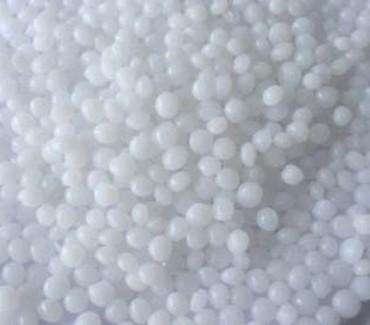What are the thermal functions of Jiangmen engineering plastics
Engineering plastics have been widely used in our daily life as engineering materials and substitutes for metal manufacturing machine parts.
In the selection of engineering plastics, the data engineer should consider not only the mechanical function and aging resistance function of the data, but also its thermal function. There are many tests on thermal function of engineering plastics. What do we need to know?
1. Continuous working temperature
Indicate the heat resistance of plastic products. It is generally divided into physical heat resistance and chemical heat resistance. The former refers to the function of regular shape plastic molding style to maintain the product shape under the specified heating temperature; the latter is to indicate the thermal stability of bisection sub key of plastic molding data.
It mainly indicates the heat resistance function of plastic molding style under no load condition. The working temperature of common engineering plastics such as PEEK is 260 ℃.
2. Glass transition temperature
When the temperature is higher than TG, the amorphous polymer will become soft rubber like. It is very important to ensure that the application temperature of amorphous polymer is lower than TG, so as to obtain the desired mechanical function.
3. Thermal deformation temperature
Thermal deformation temperature is a popular term for load deflection temperature. It is a method to measure the rigidity of plastics at high temperature: under a certain load, the temperature is continuously heated at a certain speed until the style shows the temperature indicating the deformation amount.

Since the load deflection temperature is the lower limit of the temperature indicated to be close to the glass transition temperature in the amorphous plastic prediction, it can be more or less a practical reference.
However, the load deflection temperature is the temperature between the glass transition point and the crystallization melting point, so it is meaningless both in theory and in practice, and the error of measurement results is also very obvious. This parameter is used to measure the temperature tolerance of different data under the condition of short time heating and load.
4. Linear swell coefficient
Linear swell coefficient refers to the swell share of plastic molding products under a certain pressure when the temperature increases by 1 ℃. It is indicated as the linear swell coefficient relative to unit length. The coefficient is one of the important policies to understand the change degree of product standards with the increase of temperature of plastic products.
5. Thermal conductivity
The thermal conductivity indicates the heat that passes through the plastic product with a temperature difference of 1 ℃ and a thickness of 1 cm in 1 s. It is the reference guideline for discussing the product thermal insulation when planning the product.
6. Specific heat capacity
The specific heat capacity refers to the heat capacity relative to the unit mass (1g) of plastic products. Generally, it indicates the heat required when the temperature of plastic products increases by 1 ℃. The specific heat capacity is the same as the thermal conductivity, which is the reference data for the discussion policy of product heating in product planning.
7. Embrittlement temperature
A measure of the mechanical behavior of plastics at low temperatures. When the sample is impacted by a hammer with certain energy. Determination of embrittlement temperature: clamp one end of regular shape and standard molding style with test clamp, fix it in the test tank, soak it in the specified low temperature heat transfer preface at all levels, place it for 2.9-3.1min, knock it once with impact hammer, and calculate the brittleness temperature from the damaged results.
Source: Jiangmen engineering plastics http://www.qdsmt.com/
-
09-14
What kinds of Jiangmen engineering plastics have good thermal conductivity
What engineering plastics have good thermal conductivity? Most of the traditional thermal conductive plastics are thermal insulation materials. The thermal conductive plastics developed by Zhaoke company bring new key to this field. The commercial application of thermal conductive plastics began in 1998, and more than one million pieces have been made. The products have been successfully applied in various fields, such as consumer electronics, power electronics, cars, motorcycles, lighting, medi
-
09-14
What are the application fields of Jiangmen engineering plastics
Five major application fields: 1. Film materials: various kinds of food, medicine, non-toxic and aseptic packaging materials; packaging materials of textiles, instruments and electrical components; base materials of audio tapes, video tapes, film films, computer floppy disks, metal coated films and photosensitive films; 2; Electrical insulation materials, capacitor films, flexible printed circuit boards and membrane switches and other electronic and mechanical fields. 2. The application of packa
-
09-14
What are the thermal functions of Jiangmen engineering plastics
Engineering plastics have been widely used in our daily life as engineering materials and substitutes for metal manufacturing machine parts. In the selection of engineering plastics, the data engineer should consider not only the mechanical function and aging resistance function of the data, but also its thermal function. There are many tests on thermal function of engineering plastics. What do we need to know? 1. The continuous working temperature indicates the heat resistance of plastic moldin
-
09-14
What are the types of Jiangmen engineering plastics
Engineering plastics have the characteristics of high rigidity, small creep, high mechanical strength, good heat resistance and good electrical insulation, which make it can be used in harsh chemical and physical environment for a long time, and can replace metal as engineering structural materials. With the development of technology, the application of engineering plastics has been extended to cars, home appliances, aviation, sports, electronics, construction and other fields. PA is a kind of e